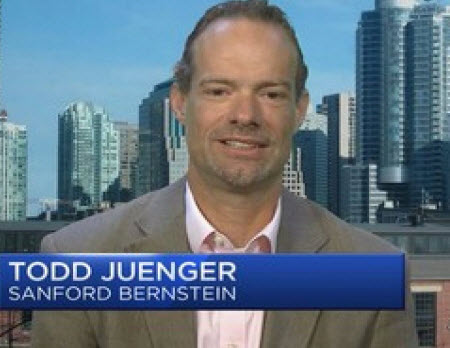Juenger: Skinny Bundles Miss Target

Sanford Bernstein media analyst Todd Juenger held his fourth focus group aimed at determining the appetite for “skinny bundles” and found the segment hungriest to reduce their pay TV diet were consumers that already were eating too much.
Juenger’s latest focus group was held in Boston on June 7, asking a group of young consumers (under 40 years of age, living independently, and a mixture of cord-cutters and pay TV subscribers) to explore their interest in OTT packages like Sling TV, DirecTV Now, and YouTube TV. The analyst has conducted three similar focus groups in San Francisco, Chicago and New York and plans to conduct similar groups on stage at its upcoming Future of Media Summit in New York on June 28 and 29.
As in past focus groups, the samples are small – about 17 people, nine female and eight male – and are not supposed to be considered all encompassing. But they do provide anecdotal insight into young consumer behavior.
What Juenger found was basically what was determined in the earlier groups – the customers most likely to opt for skinny bundles were existing pay TV customers, many with the top level of service, which “aren’t exactly the incremental, cord-cutting audience we've heard network executives describe,” he wrote. “If they can trade down, save money, and still get the content that's most important to them, they're willing to consider switching. Cord-nevers/cord-cutters, on the other hand, once again expressed almost no interest.”
Specific shows, not networks or channels, seem to be driving most young consumers’ buying habits, with several of those surveyed adding that if they see a show they like, they’ll buy it. Young millennials who don’t have pay TV subscriptions aren’t likely to be compelled to start paying for a “skinny” video package, mainly because it doesn’t include all the shows they watch.
“My whole thing is just there’s so many different services, and they don’t have—they’re all missing something. My question is, why?," noted one participant who pays $200 per month for five different services.
Juenger asked the participants what channels they would pay $5 per month for and ESPN topped the list, followed by Food Network, FX, HGTV, Logo, NBCSN, Syfy and VH1.
Multichannel Newsletter
The smarter way to stay on top of the multichannel video marketplace. Sign up below.
Of the consumers that did stick with their full video packages, DVR service was the service most feared losing if they downgraded, according to the report.
One difference from the other studies was that local news seemed to fall from the list of reasons why consumers balked at cutting the cord. Most participants said the availability of local news on the internet made it easier to do without those channels.
One service the participants seemed to be unable to do without was Netflix. While most were focused on cutting their costs when it came to TV entertainment, ost participants said they would keep their Netflix subscriptions even if the monthly charge rose to $15 per month. Netflix is currently priced at about $10 per month.
